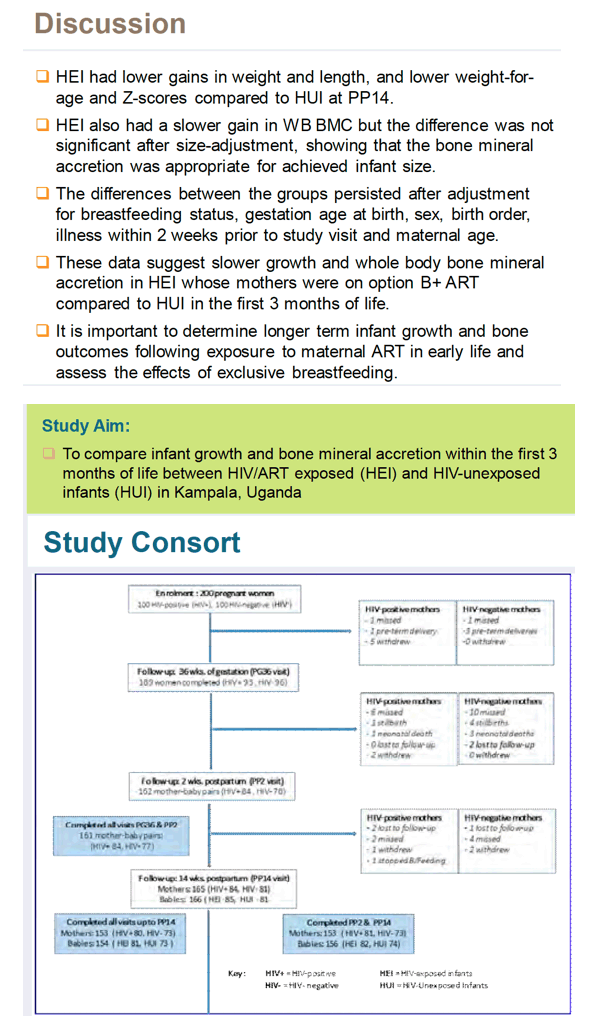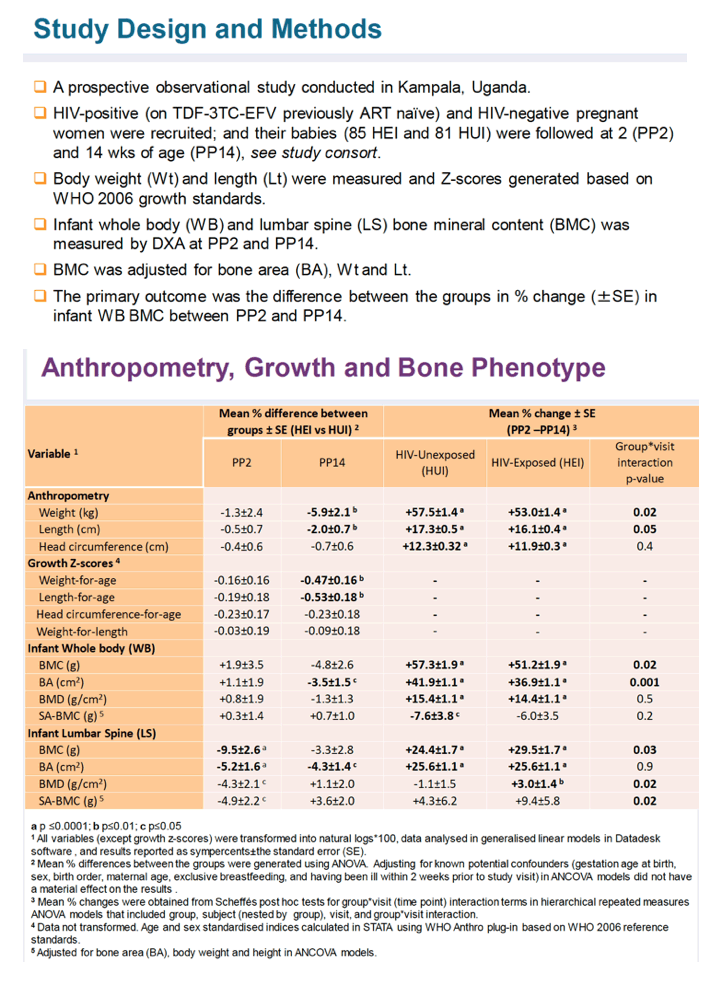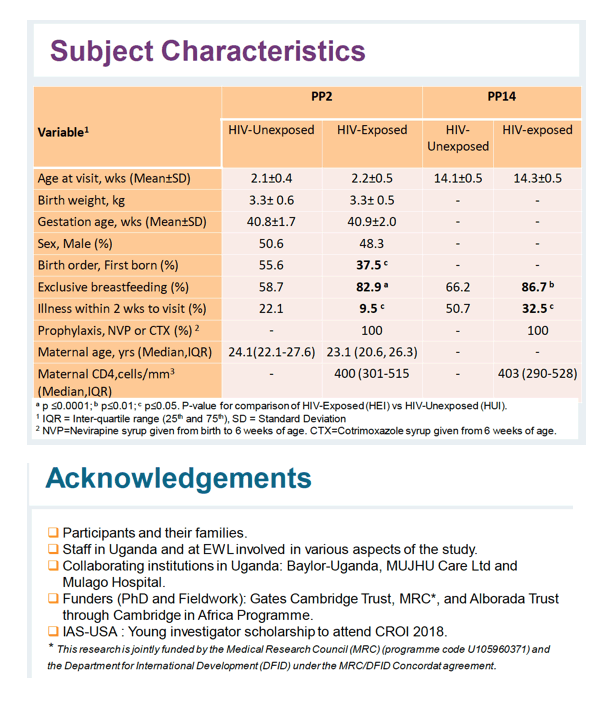| |
GROWTH AND BONE MINERAL ACCRETION IN UGANDAN
INFANTS EXPOSED TO MATERNAL HIV AND ART
|
| |
| |
CROI 2018
Abstract Body
Initiation of ART in HIV-infected adults is associated with a 2-6% decrease in bone mineral (BM) regardless of ART regimen. Maternal ART may perturb BM mobilisation in the mother during pregnancy and lactation, and/or may directly act on the baby’s bone leading to compromised growth/BM accretion. Lower BM in American and African newborns has been reported following exposure to maternal TDF-based ART. However, there are limited data on infant BM accretion following both in-utero and postpartum exposure to maternal option B+ ART. We compared infant growth and bone mineral accretion between HIV/ART exposed (HEI) and HIV-unexposed infants (HUI).
HIV-positive (on TDF-3TC-EFV previously ART naïve) and HIV-negative pregnant women were recruited in Kampala, Uganda; and their babies (82 HEI and 72 HUI) were followed at 2 (PP2) and 14 wks of age (PP14). Infant whole body (WB) and lumbar spine (LS) BM content (BMC) was measured by DXA at PP2 and PP14. Body weight (Wt) and length (Lt) were measured and Z-scores generated based on WHO 2006 growth standards. BMC was adjusted for bone area, Wt and Lt. The primary outcome was the difference between the groups in % change (± SE) in infant WB BMC between PP2 and PP14.
Mean gestation was 40.9±1.8 wks and not significantly different between groups. By PP14, the mean duration of exposure to ART was 29.3±5.1 wks. Maternal adherence to ART was >95% and median CD4 count was 403 (IQR 290-528) at PP14. More HEI were exclusively breastfed (EBF) (PP2 82.9% v 58.7%; PP14 86.7% v 66.2%, both p<0.05); showing that the BM accretion was appropriate for achieved infant size. In contrast, HEI had a greater increase in LS BMC (29.5±1.7% v 24.4±1.7%, p<0.05), a difference which remained after size-adjustment (11.4±5.4% v 6.5±5.8%, p<0.05.
These data have shown early slower growth and whole body BM accretion in HEI whose mothers were on option B+ ART compared to HUI in the first 3 mo of life. It is important to determine longer-term infant growth and bone outcomes following exposure to maternal ART in early life



|
|
| |
| |
|
|
|